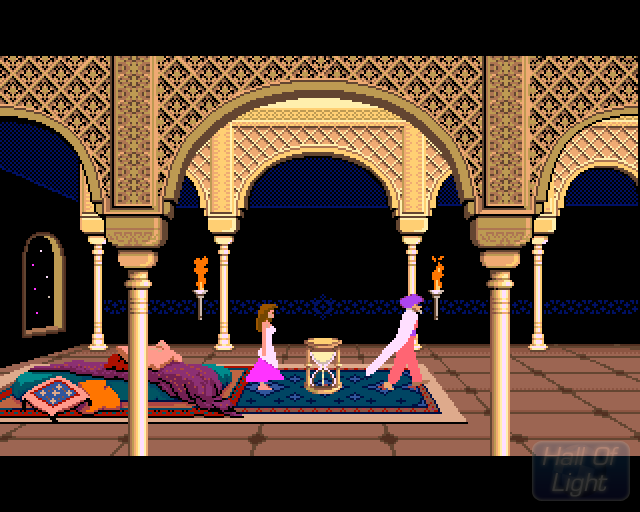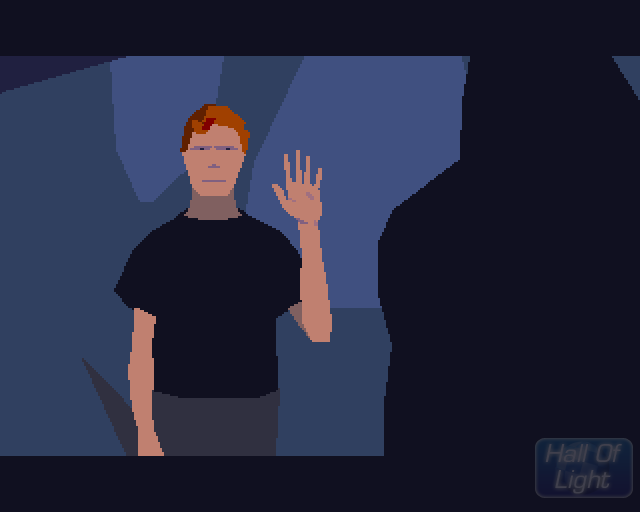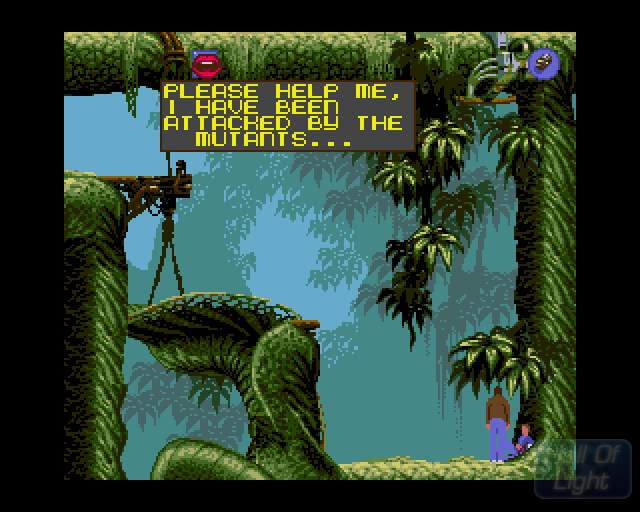FAQ
How to prevent Guru meditation "8000 000B" if one of the partition is unvalidated?
I added a call to DiskSalv first thing in the Startup-sequence:
DiskSalv FROM=CF2: TO:CF4: MODE=Salvage
so that it "locks" the partition and prevents the Guru meditation. Then, after having tried to repair unsuccessfully the disk, I fixed the problem using the salvage mode! Bad blocks still remained so I had to finally re-format the partition.
How can I start AmiKit immediately after booting Windows XP/7?
The trick that the AmiKit launcher uses is the -datapath command-line parameter to WinUAE. So, to run the same configuration as the launcher does:
- Create a shortcut in the Startup folder in the Start menu, in All programs.
- Select the shortcut, right-click, and then select "Properties".
- Edit the properties as follows:
- Target: C:\AmiKit\WinUAE\winuae.exe -datapath C:\AmiKit\WinUAE -f "../WinUAE/Configurations/AmiKit.UAE" -s use_gui=no
- Start in: C:\AmiKit\WinUAE
What is your naming scheme for your computers and their IP addresses?
My naming scheme is based on Korean words at home and at work:
| Computers |
Names |
Meanings |
IPs |
| Usual Computers |
| A4000 |
SangjaOppa |
상자오빠 |
Boxy friend |
.11 |
| A1200 (Evo X500) |
GibChingu |
집친구 |
House friend |
.31 |
| A600 |
JagEunChingu |
작은친구 |
Little friend |
.12 |
| Special Computers |
| A1000 |
WonlaeGeos |
원래것 |
Original one |
N/A |
| CD32 |
BichWonban |
빛원반 |
Light disc |
N/A |
| A1200 (Web Server) |
Chingu |
친구 |
Friend |
.13 |
| FPGA Arcade |
BogjeDoen |
복제된 |
Cloned |
.20 |
| THEA500Mini |
AOBaegMini |
A오백Mini |
A 500 mini |
N/A |
| Former Computers |
| WinUAE |
DongilGeon |
동일건 |
Same thing |
N/A |
| A2000 |
HoeSangja |
회상자 |
Time box |
N/A |
| Amiga PI |
| Raspberry PI 1 Model B |
Chamsae |
참새 |
Sparrow |
.10 |
| Raspberry PI 1 Model B |
Raspbmc |
|
|
N/A |
| Others |
| Commodore C64 |
Gocham |
고참 |
Old-timer |
N/A |
| NeXT NeXTstation |
DaeumYeog |
다음역 |
Next station |
.32 |
| Dell Inspiron 4000 |
BagsaYeongGam |
박사 영감 |
Doctoral inspiration |
Pending |
| Dell PowerEdge 600SC |
Makoli |
막걸리 |
Farmer liquor |
Pending |
| Apple iMac G3 |
|
|
|
Pending |
| Apple Macintosh SE |
|
|
|
N/A |
| Apple Power Mac G4 |
Nabi |
나비 |
Butterfly |
Pending |
| Apple Power Mac G5 |
|
|
|
Pending |
| HP EliteBook 2740p |
Tcheck |
책 |
Book |
Dynamic |
How to get the best of MWB, NewIcons, and MCP on a 16- or 32-colour screen?
The combination of the new IconLibrary, MagicWB, MCP, and NewIcons can really, really improve the visual quality of your Workbench and its icons but can be tricky to configure... After some research, two options (with two additional options each) in MCP and NewIcons control the visual display of icons:
The winner is thus:
- selecting only the No Border option in the No Iconborder item of the Global Features of MCP;
- unselecting No Borders in the NewIcons preferences.
OS, Workbench, and Kickstart Versioning Mystery Solved
The versioning scheme on the AmigaOS differ from more recent ones. A version number is composed of two integers separated by a dot in the form <Version>.<Revision>. Hence, the version number 1.36 is greater than 1.4  . Confusing, eh? . Confusing, eh?
In addition, the AmigaOS is composed of two major parts, the Kickstart and the Workbench, themselves composed of many components, such as modules, devices, and libraries; all with their own version number! But, when talking about the AmigaOS, it is most important to know which versions of the Kickstart and of the Workbench are considered.
The following figure and table try to relate the different version numbers using various sources (1, 2, 3 and EAB!). On the figure, I show some components that "migrated" among "major" versions but it's by no means comprehensive: the devil is in the details, which would require a complete analyis of all the change logs!

| Years |
AmigaOS |
Kickstart |
Workbench |
| 1982-3 |
<0.4 |
<24 |
|
| 1984 |
0.4 |
23, 24 |
|
| 1985 |
0.6 |
26.1, 26.7 |
27.3 |
| 1985 |
0.7 |
27.3 |
27.5 |
| 1985 |
0.9 |
29.2, 29.11 |
29.2 |
| 1985 |
1.0 |
30.x |
30.x |
| 1986 |
1.1 |
(NTSC) 31.34
(PAL) 32.34 |
31.334 |
| 1987 |
1.2 |
33.166, 33.180 |
33.43, 33.46, 33.47, 33.56, 33.59, 33.61 |
| 1988 |
1.3 |
34.5 |
34.1, 34.20, 34.21 |
| 1988 |
1.3.2 |
34.5 |
34.28 |
| 1991 |
1.3.3 |
34.5 |
34.34 |
| 1989 |
1.4a15 |
35 |
36.1 |
| 1990 |
1.4b1 |
36.2, 36.15 |
36.8 |
| 1991 |
2.0 |
36.141 |
36.68 |
| 1991 |
2.01 |
36.143 |
36.69 |
| 1991 |
2.02 |
36.207 |
36.70 |
| 1991 |
2.03 |
36.209 |
36.102 |
| 1992 |
2.04 |
37.175 |
37.67 |
| 1992 |
2.05 |
37.299, 37.300, 37.350 |
37.71, 37.72, 37.73 |
| 1992 |
2.1 |
37.299, 37.300, 37.350 |
38.35, 38.36 |
| 1992 |
3.0 |
39.106 |
39.29 |
| 1994 |
3.1 |
40.55, 40.56, 40.58, 40.60, 40.63, 40.68, 40.70, 40.72 |
40.42, 40.43 |
| 2018 |
3.1.4 |
46.143 |
45.5 |
2019
|
3.1.4.1
|
46.151
|
45.194 |
2021
|
3.2
|
47.96 |
47.2 |
| 1996 |
(3.2)1,2 |
(Walker) 43.1B |
40.42, 43.4 |
| 1999 |
3.5 |
40.63 |
44.2, 44.4, 44.5 |
| 2000 |
3.9 |
45.57 |
45.1, 45.2, 45.3 |
2006
|
4.0
|
52.2
|
52.1 |
2008
|
4.1
|
53.5, 53.8
|
52.2 |
2014
|
4.1 FE
|
53.70
|
53.70 |
Frequencies Mysteries
Connecting your Amiga to a display screen used to be simple and straightforward with "stock" Amigas in the 80's and 90's... but nowadays, with LCD (and other plasma displays) and graphic cards of all shapes and forms, it's quite confusing! 
Here are some good resources about converters/adapters:
How Can I Access the Modern WWW on My Old Amiga?
The WWW evolved a lot since the last Amiga was produced and, for better or worst, CSS, JavaScript, and HTML5 are now de-facto standard for many Web sites. Also, many Web sites use SSL even without good reasons. Finally, a lot of Web sites are now Web applications, doing some kind of AJAX.
In these conditions, our Amigas are a bit at a disadvantage... Although the famous and well-featured IBrowse receives again regular updates, it doesn't support CSS and has limited support for JavaScript.
But complements/alternatives exist! Beyond other Web browsers, like Links (and its v2.12 for Amiga), there are the possibility to interpose a proxy that convert modern Web sites into clickable images. This Web site explains very well these alternatives:
- Web Rendering Proxy (WRP): to render modern Web sites as clickable images;
- Squid: to perform TLS/SSL handshakes with modern Web sites from a browser with SSL;
- Crypto Ancienne (Cryanc): to integrate TLS in pre-C99 code.
For our Amigas, WRP is really great. Install it on your favourite Raspberry PI and point your browser to it and you can access modern Web sites, albeit a bit slower... 
Prince of Persia, Another World, and Flashback
Within three years of 1989, three games were released that used rotoscoping for their characters. Out of these three, two look very similar to the point of being sometimes confused for each other. So, let's sort them out!
 |
In 1989, Brøderbund released Prince of Persia, written by Jordan Mechner. The first game to use rotoscoping, its titular character is a prince that must save a princess, played by Mechner's younger brother. It draws from One Thousand and One Nights stories and other stories. |
 |
In 1991, Delphine Software released Another World, written by Éric Chahi. The second game to use rotoscoping, it tells the story of a physicist who is teleported to another world and, with the help of a local inhabitant, who must escape prison and avoid murder. (Confusingly, this game is called Out of This World in North America!  ) ) |
 |
In 1992, Delphine Software (again!) released Flashback, (partly) written by Paul Cuisset. The third game to use rotoscoping, it involves a secret agent who discovers that an alien, hostile race has infiltrated the human race and attempts to destroy the "brain" controlling these aliens. |
While Prince of Persia has distinctive visuals inspired by One Thousand and One Nights stories, the other may look alike superficially. Indeed, they both feature a character who could have been played by the same actor, different only by his clothes. They also both take place on alien planets, starting in some natural, alien environments and alien inhabitants (both animal and people).
Links
Some interesting, Amiga-related links, in no particular order but by categories.
Information
- Commodore Free Issues, a magazine dedicated to everything Commodore, in particular C64, but also Amiga;
- Some explanations on why use an Amiga in 2011, a cool video showing off the capabilities of recent Amiga hardware and software;
- A test of AROS Broadway at Linux Action Show;
- The Computer Magazine Archives, Amiga-related magazines stored on the Internet archive;
- Commodore is Awesome, Amiga-related magazines, including Amiga Format and Amiga World;
- DLH's Commodore Archive, tons of magazines, books, docs in PDF;
- An interview with Trevor Dickinson in the Greek magazine Retro Planet;
- The big book of Amiga hardware tells you all about hardware for the Amigas;
- Very nice vector schematics of Amiga motherboards;
- All about Amiga graphics in the Amiga Graphics Archive;
- An article dedicated to the Amiga X5000 from A-Eon on ArsTechnica!
- A short post on the Vampire v4 on Gizmodo;
- Some documents on the Amiga, its history, and its programming.
- An article on Slashdot about the new reverse-engineered A1200 and A4000 motherboards;
- An amazing, virtual museum dedicated to the Amiga!
- A comprehensive discussion of the A1222, and its Tabor motherboard.
Programming
Emulators
Misc
- Cool Web site with an Amiga style;
- A blog about the Amiga 1000 and how to run Kickstart 2.0!
- A Guru Meditation occurring on OpenSubtitles.org;
- A Wordpress template with the style of Workbench v1.x;
- A Wordpress template with the style of Workbench v2.x;
- Superbes remix de musiques de jeux;
- A very interesting (and long) article about OSes, memory, virtualisation... and the Amiga!
- An interesting discussion on improving the performances of class Amigas;
- A data-switch to use multiple Amigas with the same mouse, keyboard, speakers...

- A comparison of the Falcon 030 vs. Amiga 1200;
- On using a Raspberry PI as an Amiga floppy-drive emulator;
- On using an Amiga 1000 with the Comspec 2MB AX2000 and the Kickstart 2.0;
- A experiment of running a Web server on a Mac SE/30... much less interesting
 ; ;
- A very interesting discussions of latency in emulators, may apply to WinUAE (or not!);
- A two-part piece (1 and 2) on the development of the Atari ST, which seemed as chaotic and rushed as the Amiga Lorraine...
- A story of the history of the micro-processor... maybe not invented by Intel!
- A list of the 13 greatest error messages, incliding our beloved Guru Meditation;
- A comparison of different OSes against Windows 7/Vista (a bit outdated);
- An amazing gallery of graphical user interfaces, with tons of information and a timeline!
- A very cool interview with Simon Phipps, author of Rick Dangerous
 ; ;
- A site on building your own computers;
- An open-source reimplementation of Dune
 ; ;
- A new graphic card, the ZZ9000, for big-box Amigas with a lots of goodies!
- 3D-print services for Amiga custom designs;
- Drawings realised by George Stibitz, father of the modern digital computer, on an Amiga;
- Bassoon Tracker, an "Old school Amiga MOD and XM tracker".
- Retro directory of anything retro in the world!
The last three changes:Tygre - 2024-07-03 21:23:05 | Tygre - 2024-07-03 21:22:10 | Tygre - 2024-07-03 21:17:58
|



 . Confusing, eh?
. Confusing, eh?



 )
)
 .
. ;
;